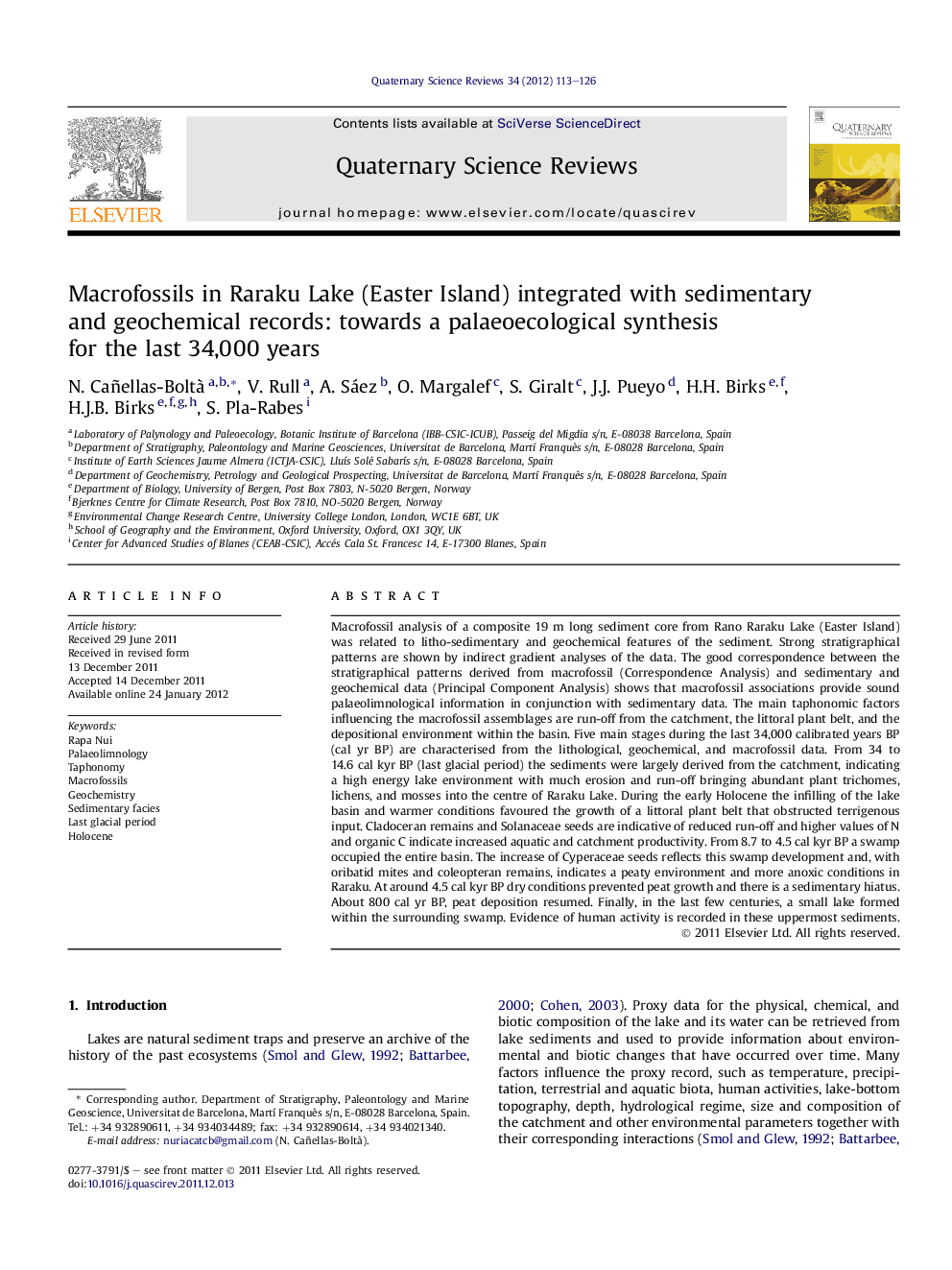| کد مقاله | کد نشریه | سال انتشار | مقاله انگلیسی | نسخه تمام متن |
|---|---|---|---|---|
| 4735794 | 1640900 | 2012 | 14 صفحه PDF | دانلود رایگان |

Macrofossil analysis of a composite 19 m long sediment core from Rano Raraku Lake (Easter Island) was related to litho-sedimentary and geochemical features of the sediment. Strong stratigraphical patterns are shown by indirect gradient analyses of the data. The good correspondence between the stratigraphical patterns derived from macrofossil (Correspondence Analysis) and sedimentary and geochemical data (Principal Component Analysis) shows that macrofossil associations provide sound palaeolimnological information in conjunction with sedimentary data. The main taphonomic factors influencing the macrofossil assemblages are run-off from the catchment, the littoral plant belt, and the depositional environment within the basin. Five main stages during the last 34,000 calibrated years BP (cal yr BP) are characterised from the lithological, geochemical, and macrofossil data. From 34 to 14.6 cal kyr BP (last glacial period) the sediments were largely derived from the catchment, indicating a high energy lake environment with much erosion and run-off bringing abundant plant trichomes, lichens, and mosses into the centre of Raraku Lake. During the early Holocene the infilling of the lake basin and warmer conditions favoured the growth of a littoral plant belt that obstructed terrigenous input. Cladoceran remains and Solanaceae seeds are indicative of reduced run-off and higher values of N and organic C indicate increased aquatic and catchment productivity. From 8.7 to 4.5 cal kyr BP a swamp occupied the entire basin. The increase of Cyperaceae seeds reflects this swamp development and, with oribatid mites and coleopteran remains, indicates a peaty environment and more anoxic conditions in Raraku. At around 4.5 cal kyr BP dry conditions prevented peat growth and there is a sedimentary hiatus. About 800 cal yr BP, peat deposition resumed. Finally, in the last few centuries, a small lake formed within the surrounding swamp. Evidence of human activity is recorded in these uppermost sediments.
► We study macrofossil in relation to lithology and geochemistry in a lake core.
► Good stratigraphical correspondence among these parameters are observed.
► Macrofossil associations are useful paleoecological indicators.
► Runoff, littoral vegetation and depositional context affect macrofossil composition.
► Lake evolution for last 34 ka is linked to climatic changes and human activities.
Journal: Quaternary Science Reviews - Volume 34, 21 February 2012, Pages 113–126